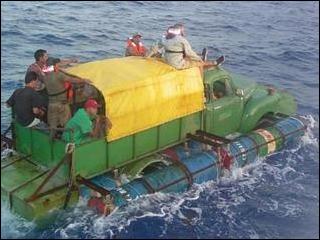The Wharton School’s article on reverse innovation points
out a growing trend of innovation from the developing world that promises to be
the next big source for new ideas and solutions to challenging development
problems. The time I have spent in Cuba lends credence to this analysis.
Cuba is home to some of the world’s most creative
innovators. Decades of scarcity and hardship have produced a society that
innovates as a matter of necessity. Cubans innovate to meet quotidian needs,
circumvent government restrictions on information, and in some cases leave the
island for good.
The combination of an ineffective government and a
50-year-old U.S. embargo has made manufactured goods we take for granted in the
U.S. difficult to come by, so many Cubans have adapted
outdated technologies to meet their everyday needs. For example, during the
time of close USSR-Cuba ties, hundreds of Soviet washing machines were imported
into Cuba. Most Cubans, however, wash and dry their clothes by hand, so most of
the machines were disassembled and repurposed to power everything from key
copiers to coconut shredders.
Another common innovation that becomes immediately apparent
when looking across the Havana skyline is the use of metal lunch trays from
elementary and secondary schools as television antennas.
Transportation is another key area of innovation in Cuba,
even on the public side. In many rural areas, and even in Havana, public buses
have been assembled from old semi-truck parts.
It is also common to see
bicycles that have been turned into motorcycles by welding on weed whacker or
lawnmower motors.
Innovation has also helped cut through the information
barrier put in place by the government and by the U.S. embargo. One example of
this is the paquete,
a system of hard drives and USB drives with web pages, videos, apps, and
software downloaded in Miami and distributed throughout Cuba via an informal
(and technically illegal) network of users.
Among the more well-known products of Cuban innovation are
the homemade boats many Cuban
migrants assemble to traverse the Florida Straits. This particular example,
though evocative of the somewhat darker driving force behind such innovations,
gets at the very core of reverse innovation – people in developing countries
discovering new ways to use what they have to meet their unique needs.
Perhaps now that the U.S. and Cuba have normalize relations and eased restrictions on financial transactions, these innovators can be connected with the capital they need to produce new ideas and take them to scale. If that does happen, I think it is reasonable to expect Cuba to become one of the leading innovators of this hemisphere.
Photo sources:
Photos 1-4: Travis Daub and Jenny Marder, "Photo essay: The bizarre, brilliant and useful inventions of Cuban DIY engineers," PBS, January 7, 2015.
Photo 5: Sarah Kessler, "In Cuba, An Underground Network Armed with USB Drives Does the Work of Google and Youtube," FastCoexist.
Photo 6: Andrew Ho, "Floating Cubans."





No comments:
Post a Comment
Note: Only a member of this blog may post a comment.